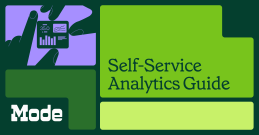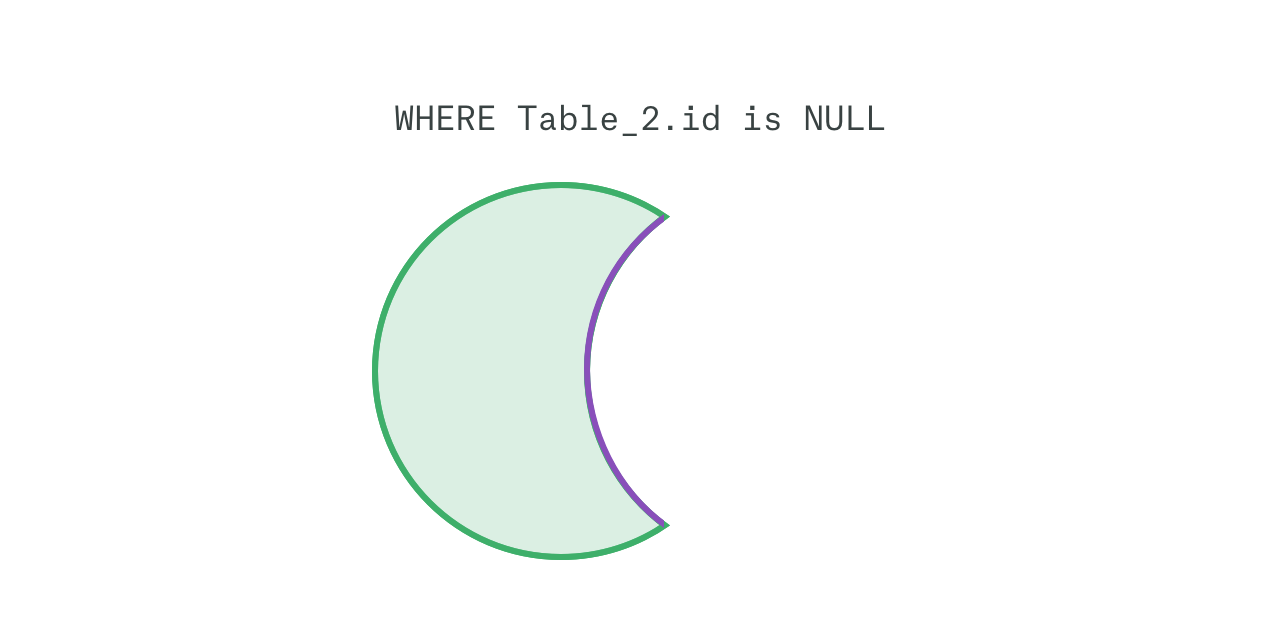What Is Embedded Analytics? A Primer
Laura Dambrosio, Mode team writer
January 14, 2023
NaN minute read

Companies are speeding up analytics workflows by making visualizations and tools for analysis accessible right in the business applications non-analysts use every day, resulting in a better end-user experience and far less backlog for the data team. They’re doing this with embedded analytics solutions that enable teams to see analyst-vetted data in their preferred tool.
What is embedded analytics?
Embedded analytics means that analytics and reports are directly surfaced (or embedded) into other software solutions. This lets end users explore data in tools they already work in, without having to go into the platform that the data was originally built in. This could look like embedding reports in applications, like Salesforce and Wordpress, or embedding internal reports to an external-facing website. You can also white-label your embedded reports so they take on your company's or client's branding.
Instead of requiring users to leave the software application they’re working in and hop into a standalone analytics software solution to find answers, dashboard software that have embedded analytics functions, like Mode, enable users to create reports and access real-time dashboards directly in the application they’re using. This makes it much easier for business teams to see the progress of important metrics and KPIs while taking other actions in the software.

A Guide to Self-Serve Analytics
Self-service analytics is necessary—here's what makes the practice successful.
How do you get started with embedded analytics?
To get started with embedded analytics, developers can use APIs (see Mode’s API guide) to add analytics capabilities to their applications, as noted by Gartner. In some cases, software teams may decide to integrate another vendor’s embedded analytics solution into their own applications through a process known as white labeling. To create white-label embeds, developers customize the analytics solution to ensure it fits in seamlessly with their own user interface.
What are use cases for embedded analytics?
Embedded analytics solutions are becoming increasingly popular because they’re versatile by design and support a number of distinct use cases, which we’ll explore in this section.
1. Accelerating self-service analytics
Collecting mountains of data doesn’t amount to much unless that data can be put to use. Embedded analytics helps data teams scale vetted data by surfacing it to business teams in tools they’re already working in. Leading Modern BI solutions are flexible by nature, enabling business users to slice and dice data every which way in interactive dashboards to find the answers they’re looking for.
2. Accelerating time-to-value on your analytics stack
When it comes time to incorporate any new software solution into an organization’s tech stack, decision-makers face the familiar choice of build vs. buy. Organizations can accelerate time to value and achieve rapid ROI by embedding analytics via a platform already built for fast-growing companies that want to achieve a data-driven culture, supercharging their analytics journeys right away instead of waiting months for an internal build.
For example, Honeycomb was able to use Mode’s White Label Embeds to surface usage insights to customers without placing undue burden on their engineers.
3. Getting data to your customers
You can use embedded analytics to empower your customers using your product. Many companies use a modern BI solution like Mode to add flexible, customizable-branded charts and visualizations for their customers without building them from scratch. For example, Molecule, a fintech company, is able to deliver real-time data to customers, with Mode's White-Label Embeds. Replacing "bareboned" spreadsheets with dynamic charts, their customers are able to see real-time market data to help them earn greater context on a daily basis.
When your customers interact with embedded analytics tools, you get greater visibility into what they need. In-product behavioral data helps you retool your interface in accordance with how customers interact with dashboards, graphs, and other visualizations. By making analytics a cornerstone of your apps, you can continuously improve the user experience — which, in turn, makes your product stickier and drives adoption.
Embedded analytics—bringing the data to the tools your business teams work in
Since embedded analytics platforms sit directly inside applications employees rely on — including CRM solutions and marketing automation platforms — users are able to create visualizations and reports right where they are and view them in proper context. As a result, not only are users much more likely to use the analytics tools in the first place, it’s also much easier for them to leverage real-time data and take immediate action. As users integrate analytics directly into their workflows and use them more and more, your application transforms from a helpful tool into a mission-critical software solution that business teams can’t live without.
While traditional BI tools are best suited for giving executives and managers a bird’s-eye view of where the business stands at a given point in time, embedded analytics empower front-line business users to make data-driven decisions with speed, agility, and precision.
What are the benefits of embedded analytics?
Embedded analytics provide several benefits to both engineering teams and end users. With that in mind, let’s examine seven of the more persuasive ones.
1. Unlock new revenue streams
Embedded analytics help companies tap into new revenue streams when you can offer embedded analytics functionality to customers as a premium feature. On the other side of the coin, embedded analytics can help teams at your own company access analyst-vetted data in tools they live in, which they can leverage to create new features that will appeal to a broad set of users. Taken together, embedded analytics provides a number of ways to unlock additional revenue streams and increase profitability accordingly.
2. Faster solutions for build vs. buy
Building your own analytics capabilities internally can be risky. Maybe a product manager leaves, maybe a major incident occurs that warrants an immediate response, or maybe the work is just taking much longer than anticipated. Whatever the case may be, any obstacles along the way will make it that much harder to stick to timelines. By embedding analytics tools built by outside vendors into your applications, the process becomes plug-and-play and lets you launch analytics much faster, improving the ROI of data along the way.
3. Get more data to more people in your organization
By bringing interactive, curated charts and reports under the hood of applications that business teams rely on, end users can become considerably more productive. By being able to self-serve analytics at their own convenience without having to toggle to other platforms, end users can work more efficiently while reclaiming all the time they’d lose due to context switching and other distractions. This makes business teams more productive and enables businesses to get a better return on their product investments.
3. Increase adoption and retention in the tools where embedded reports live
Since embedded analytics lets users stay inside your applications, they won’t have to hop from one app to the next to do their jobs. Instead, they’ll stay inside your application longer with the relevant interactive charts that they need in one place. This improves the customer experience while increasing adoption and retention. Since users will be getting more value out of your platform and can make data-driven decisions much easier, teams are much more likely to renew their contracts.
4. Users can uncover deeper insights right in their tools
In a tool like Mode, you can add filters to your embedded analytics report, and data consumers can always explore, or drill into the data with Mode's Explore feature. As a result of these deeper insights, the organization is able to build a more resilient business.
6. Driving competitive advantage
By incorporating embedded analytics into your applications before your competitors invariably do, you can drive competitive advantage, making your solutions and strategies stand out from the pack. When you partner with the right embedded analytics provider, you also get the peace of mind that comes with knowing they will stay at the forefront of innovation in that space. As a result, your application’s analytics capabilities are essentially future-proofed.
Download now

How to Lead from The Center: A Guide for Data Leaders
Learn how to unlock a trusted data experience across your org.
What to look for when evaluating white-label embeds in BI tools
Many BI tools offer a white-label embed feature, including Mode. Here are some things to consider.
Will you be charged by views to the embedded dashboard? In Mode, you can embed as many dashboards as you’d like into portals, websites, blogs, private wikis, etc. at no additional cost.
Can you keep everything on-brand in your white-label embed? Are there enough customization features? In Mode, you have the ability to keep everything on brand (HTML, Javascript, customization, color palettes, themes, etc).
How secure is the white-label embed? In Mode, to prevent unintentional leakage of sensitive data, viewers cannot see any of the underlying report’s metadata, code, historical runs, or query results.
Get our weekly data newsletter
Work-related distractions for data enthusiasts.




